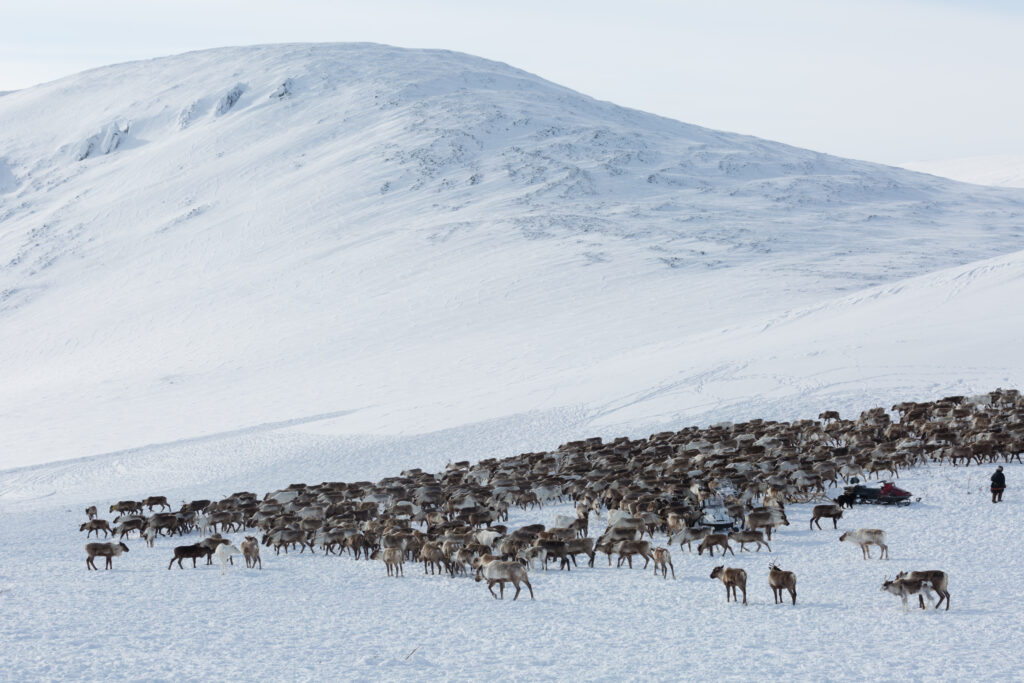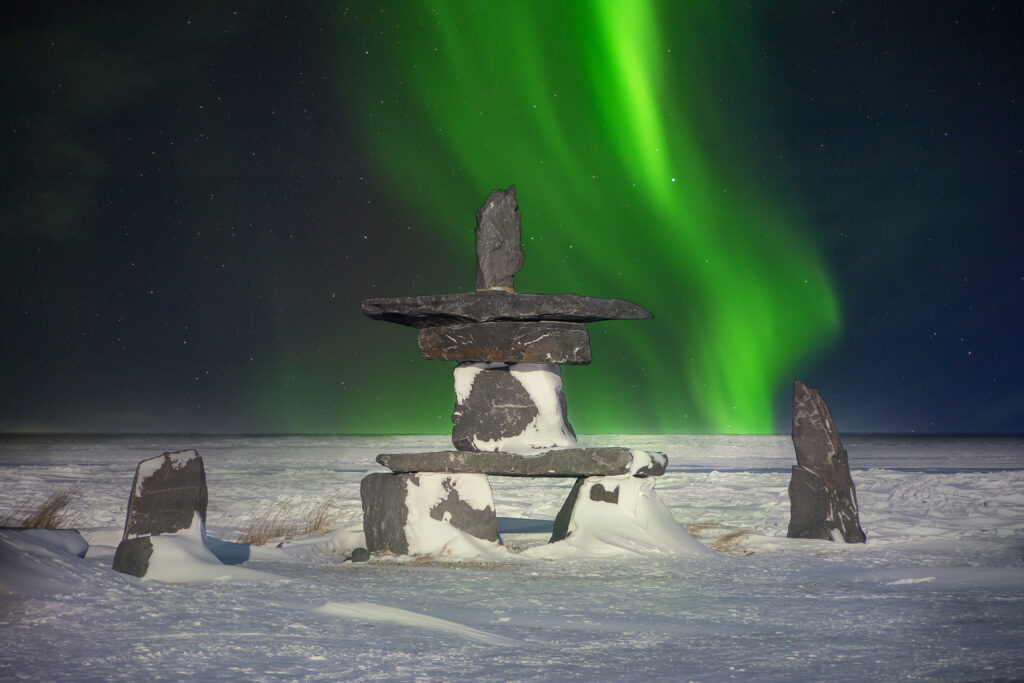The Arctic is the fastest-warming region in the world, with the temperatures rising around twice as fast compared to the global average. This, among other things such as globalisation and the hunt for natural resources, leads to a higher risk of both cultural and natural heritage loss in the area. While the latter has been extensively talked about, the loss of cultural heritage—which also encompasses tangible and intangible indigenous heritage—remains rather under-explored.
The circumpolar north is an indisputably rich area when it comes to heritage, but it is also an extremely vulnerable region. The consequences of climate change are already noticeable in both the landscape as well as in many of the indigenous communities that call the Arctic their home. The direct effects of climate change, however, are not the only threat: in fact, it has been pointed out that the indirect consequences might be just as dreadful. For instance, human-induced climate change is causing the melting of sea ice, which, in turn, is allowing easier access to natural resources and their extraction. Subsequently, this is increasing the need to relocate indigenous communities and impedes traditional practices in the area.
In a similar line, previously close to remote areas have also become more accessible, which has led to a rapid process of urbanization and globalisation in the region. Consequently, all these abrupt transformations are affecting Indigenous Peoples’ well-being and compromising the possibility to preserve parts of their heritage that are closely tied to their identity. One example of this is the repercussion that the drastic shift from an entirely natural diet to the introduction of store-bought, unhealthy, and processed food has had on Inuits’ health. Parallelly, the Inuit are struggling to continue with their traditional practices for storing the food they hunt and fish, as the rising temperatures cause it to spoil.
The Nunavummiut, the Indigenous Peoples of the Canadian province of Nunavut, have also observed major transformations in their territory due to climate change. Among others, they have pointed out significant changes in the sea ice, which is now thinner and melts earlier in the year. Moreover, water levels have dropped, which impedes Inuit boat navigation, a common traditional practice, and transportation method. In a general sense, the timing of the traditional Inuit seasons has changed and the weather is now very unpredictable, which has resulted in their inherited weather-related knowledge losing its value.
On the other side of the Arctic, the Sámi – who are considered to be the last Indigenous Peoples within the European Union – are also at risk. According to the Sametinget (the Sámi parliament of Sweden), climate change will severely affect reindeer herding, a practice closely linked to the Sámi identity. This is due to the increase in temperature that leads to significant changes in the area’s winter climate. According to The Guardian, warmer temperatures result in more rain instead of snow. The sodden ground then freezes solid and prevents the reindeer from being able to dig underneath to get their food, which can ultimately lead to famine.


The mass starvation of reindeer, along with the loss of grazing land due to forestry and mining activities—which has led to herding areas being reduced by around 70% in the last century—causes a serious threat to an essential part of the Sámi’s identity. Klemetti Näkkäläjärvi, a Sámi cultural anthropologist, warns that as temperatures continue to rise, the distinct Sámi culture and knowledge is increasingly at risk of vanishing. “Climate change mitigation and adaptation are a question of human rights for Indigenous people”’, Näkkäläjärvi adds.
Non-tangible indigenous heritage loss is also under threat due to climate change. Intellectual heritage, such as knowledge, traditions, and stories, is the link to a people’s past, present, and future. Traditional knowledge is often passed down from generation to generation and is an essential part of the indigenous heritage. Many Indigenous Peoples have depended on that knowledge for centuries in order to survive: knowing to orientate oneself in the wilderness, to fish and hunt, or which fruits are edible. This knowledge was vital for the economy of many indigenous communities, who often relied heavily on hunting, fishing, and gathering to support themselves.
One example of traditional indigenous knowledge that is at risk of disappearing due to climate change is the Inuit elders’ skills to predict the weather. For centuries, the Inuit have observed the changes in wind and cloud patterns to understand how these are related to climate conditions. However, all that traditional knowledge is no longer applicable to today’s highly unpredictable weather. Furthermore, erratic climate conditions are making land travel increasingly risky, preventing the older generations to pass along their knowledge to the youth.


Traditional Indigenous practices and knowledge are not the only ones at risk, though. Permafrost loss and greater coastline erosion driven by late freezing of sea ice are also threatening Indigenous heritage sites. The traditional Arctic environment conditions contribute to the preservation of biological material buried in permafrost. The melting of the permafrost can result in the loss of precious items that used to be conserved in the ice. One recent manifestation of this occurrence is the case of the Indigenous Yup’ik people of Alaska and the archaeological site of Nunalleq, where a dispute between two settlements resulted in a massacre that wiped out entire villages. The tragic events caused thousands of artefacts to be left behind and eventually frozen and preserved in permafrost. With the melting of the ice, around 2500 items—from everyday life utensils to spectacular cultural gems—started to emerge. Pieces that remained intact since the 1660s now risk being exposed to the elements and damaged as a result of climate change. Nevertheless, this has given archaeologists the opportunity to bring to light a part of the Yup’ik people’s history that had been rather unexplored until then.
There are several examples all over the Arctic of climate change-driven effects on indigenous heritage loss. Changes in the region’s socio-ecological systems are damaging numerous areas of their livelihoods, and the situation is only projected to worsen significantly in the future. Indigenous practices, traditional knowledge, and cultural legacy are all at risk of disappearing, yet there has been very little international attention drawn to this issue. As indigenous activists keep relentlessly fighting to make their voices heard in global environmental discussions, the international community is slowly realizing that a more inclusive approach is needed in order to effectively mitigate the effects of climate change. However, as long as indigenous environmental rights are not at the core of climate change mitigation strategies, these are doomed to dismiss one of the most vulnerable groups facing the consequences of the climate crisis.
Ivette Nogués




